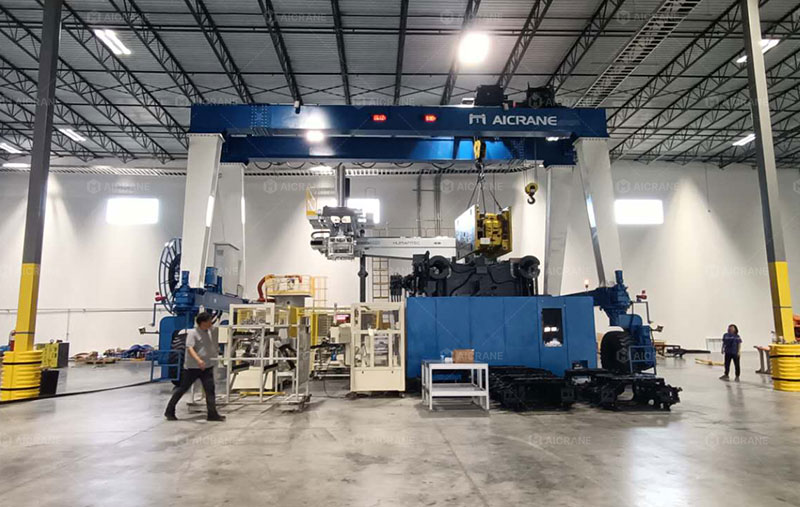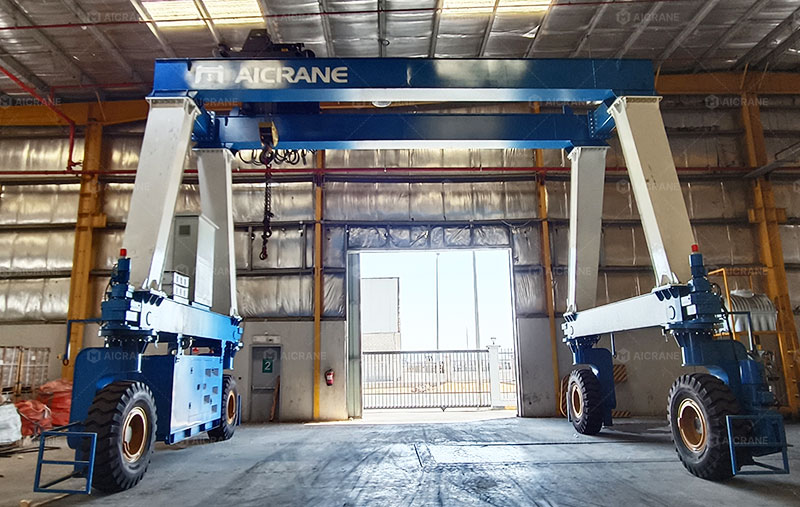In modern industrial environments, space utilization and equipment efficiency are key factors driving operational performance. For facilities requiring heavy material handling within confined indoor spaces, 30-ton gantry cranes offer a robust solution. However, the challenge lies in designing and implementing a system that not only handles such loads effectively but also fits within spatial limitations. Compact design solutions for indoor 30-ton gantry crane applications have emerged as a response to this need, offering superior lifting capability without compromising floor space, workflow, or safety.
This article explores the importance, design considerations, features, and benefits of compact gantry cranes in indoor environments, with a focus on 30-ton capacities.

Why Choose a 30-Ton Indoor Gantry Crane?
A 30 ton gantry crane is ideal for industries that require moderate to heavy-duty lifting such as:
-
Steel fabrication and processing
-
Machinery manufacturing
-
Mold handling in plastic and die-casting factories
-
Precast concrete production
-
Power plants and turbine assembly
-
Ship and locomotive maintenance
These cranes provide a balance between capacity and mobility, capable of lifting large items while still being manageable within enclosed structures.
However, most industrial buildings come with limitations in ceiling height, span width, and floor space. This is where compact design becomes essential—enabling efficient material handling without expensive facility modifications or safety risks.
Key Compact Design Features
1. Low Headroom Configuration
One of the primary characteristics of compact indoor gantry cranes is their low headroom design. By reducing the distance between the crane’s lifting hook and the top of the crane structure, manufacturers ensure that the system operates within facilities with low ceiling clearance.
This is achieved through:
-
Shorter end carriages and vertical supports
-
Optimized trolley and hoist configuration
-
Inverted hoist design (where applicable)
For example, using a European-style low-headroom electric hoist can reduce the total height requirement while still offering high lifting capacity and speed.
2. Narrow Span Customization
In indoor environments where wall spacing is limited, standard gantry crane spans may not be practical. Compact gantry cranes can be engineered with customized narrow spans, often ranging from 6 to 18 meters, depending on the specific layout.
Despite a narrower span, structural reinforcements such as box girder designs and high-strength materials ensure the crane maintains its 30-ton lifting capacity.
3. Adjustable or Fixed Height Options
Indoor cranes often need to move loads at different height levels, especially in multi-stage production processes. Compact gantry cranes can be offered with adjustable heights to accommodate a wider range of operations or fixed heights optimized for specific tasks.
In low-roof environments, the height can be fixed just above the tallest load to maximize usable lifting height.

4. Integrated Rail or Trackless Design
Depending on facility constraints, compact gantry cranes can be equipped with integrated rail systems (semi-gantry design) or go trackless for greater flexibility. The semi-gantry option is ideal when one side of the crane can utilize an existing wall or runway beam, saving floor space and installation costs.
Trackless gantry cranes or rubber tyred gantry cranes offer mobility within multiple work areas without requiring permanent floor modifications, useful in flexible production layouts or multi-purpose workshops.
5. Compact Electrical and Control Systems
Compact cranes are also equipped with streamlined electrical enclosures, smart control panels, and wireless remote operation to reduce the need for additional floor-standing control systems.
Advanced control features include:
-
Variable frequency drives (VFDs) for smooth motion
-
Anti-sway control for precision handling
-
Remote diagnostics and monitoring
-
Emergency stop and safety interlocks
All components are integrated to minimize footprint and wiring clutter.
Design Considerations for Indoor Compact Gantry Cranes
When planning for a compact 30-ton gantry crane, the following factors should be evaluated:
1. Facility Layout and Clearance
Evaluate ceiling height, column spacing, and working aisle width. These determine the maximum crane height, span, and leg width possible without collisions or obstruction.
2. Load Type and Dimensions
Understanding the physical size and weight distribution of the loads being lifted is essential. A 30-ton double girder gantry crane may lift compact molds or long steel beams—each requiring different lifting gear, spreaders, or hooks.
3. Frequency and Duty Cycle
If the crane is to be used frequently throughout the day, the duty classification (such as FEM or ISO rating) must be matched. For moderate indoor applications, A5 or M5 classification is typically recommended.
4. Floor Load Capacity
Although gantry cranes distribute loads through their legs, indoor floors must still be evaluated for their ability to bear the weight of the crane and load, especially if mobile configurations are used.
5. Safety and Maintenance Access
Safety features such as limit switches, overload protection, and emergency controls must be integrated. Compact designs must also allow easy access to motors, hoists, and gearboxes for routine maintenance.
Common Applications of Compact 30-Ton Indoor Gantry Cranes
1. Mold Lifting in Injection Molding Plants
Molds are heavy, compact, and require precise lifting to prevent damage. A low-headroom 30-ton gantry crane is ideal for such applications, especially where mold changing is frequent.
2. Steel Fabrication Shops
These facilities often require flexible lifting solutions within tight spaces. Trackless 30-ton gantry cranes with short spans allow for handling steel beams and components without disrupting other workflows.
3. Power Equipment Assembly
Assembling generators, transformers, or turbines indoors requires powerful cranes with high lifting precision. A compact gantry crane provides the necessary strength while navigating low-roof environments.
4. Precast Concrete Component Handling
Precast factories frequently use indoor gantry cranes to move large concrete components. A compact crane can improve production line efficiency without requiring large structural changes.
Benefits of Compact 30-Ton Indoor Gantry Cranes
-
Maximized Vertical Space: Operate in low-ceiling buildings without compromising lifting height.
-
Floor Space Efficiency: Compact legs and bases mean more usable workspace for operators.
-
Ease of Installation: Smaller and lighter structures require less complex foundation or support work.
-
Cost Savings: Avoid building expansion or roof modifications by using a design tailored to indoor limitations.
-
High Customizability: Spans, heights, control systems, and lifting gear can be optimized for your specific needs.
Conclusion
The adoption of compact design solutions for indoor 30-ton gantry crane applications enables industries to overcome space limitations without sacrificing performance. With tailored spans, low-headroom configurations, mobile options, and intelligent controls, these cranes deliver powerful lifting in a format optimized for indoor use.
When planning for such a solution, it’s essential to work with experienced crane manufacturers who can evaluate your facility, understand your lifting requirements, and deliver a system that fits both physically and operationally.
In today’s industrial world where efficiency, safety, and spatial optimization are paramount, compact 30-ton gantry cranes represent a smart and forward-thinking investment.